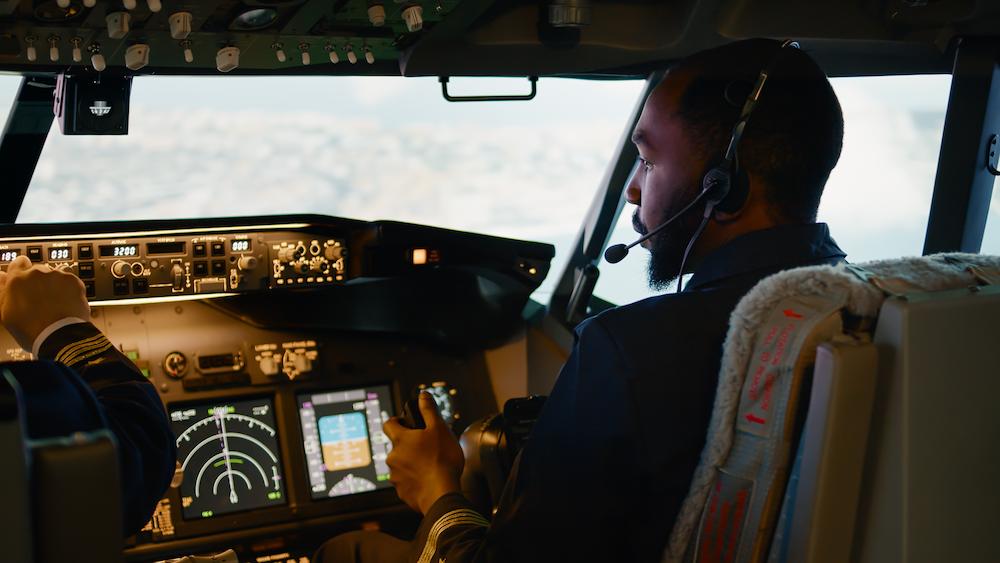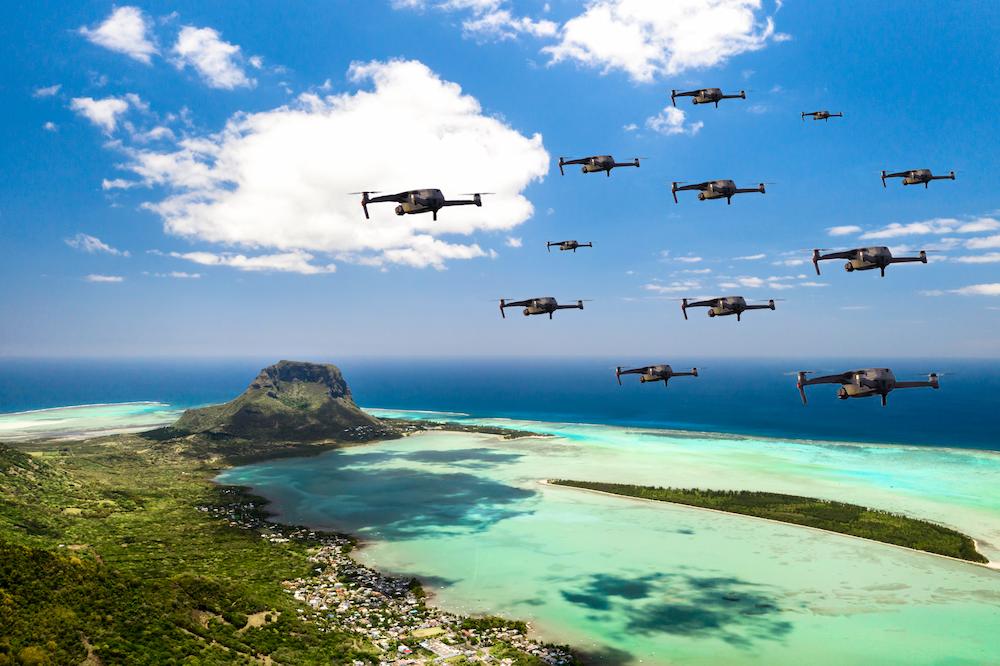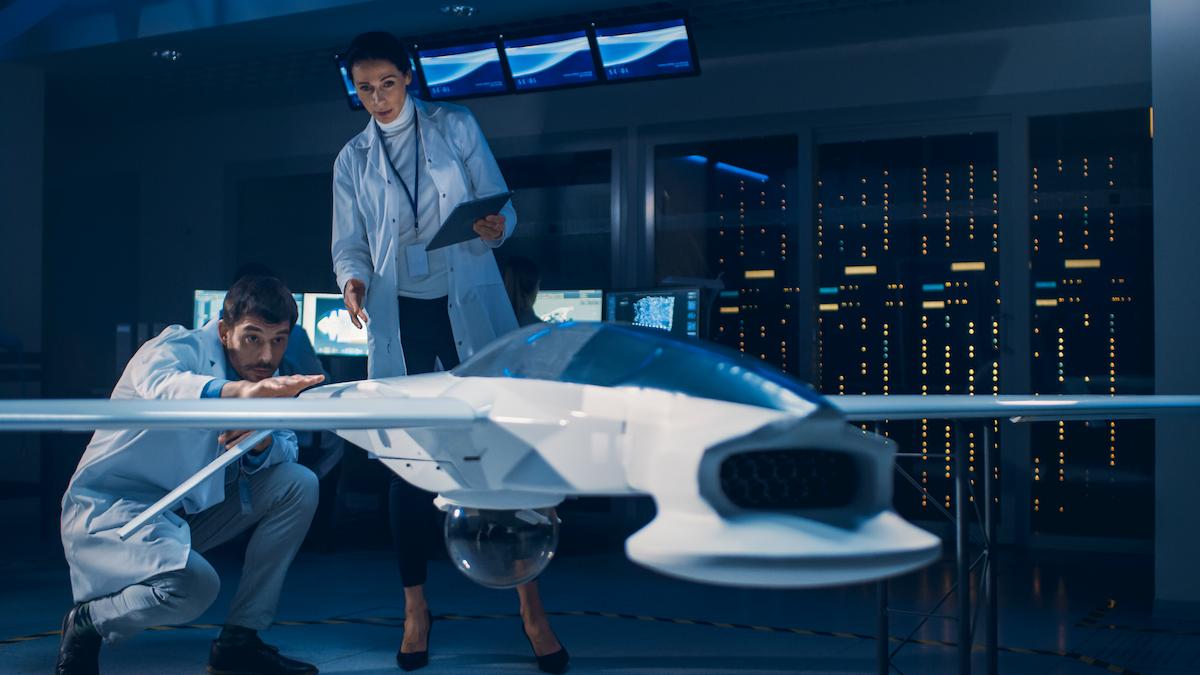By: Zev Nadler, Emerging Aviation Ambassador
Aviation has continuously innovated, taken risks and pushed boundaries since the Wright brothers. For most of its first century, flight was synonymous with the image of a human pilot—mastering the skies—from the cockpit. Over the past two decades, that image has started to shift. Uncrewed Aircraft Systems (UAS or drones)—from consumer drones and high-altitude long-endurance (HALE) military platforms to electric vertical takeoff and landing (eVTOLS)—have introduced new technologies, philosophies and practices into aviation. Ironically, in seeking to free aircraft from needing a human onboard, engineers have created tools and frameworks that now enhance the very domain they sought to transcend! Today, UAS do not just inform the traditional aviation industry, they actually reshape it. From automation and remote operations to safety protocols and air traffic integration, the crewed aviation sector continues to incorporate lessons learned from UAS in profound ways.
Automation: From Optional to Essential
One of the most direct influences drones have had on crewed aviation is in the realm of automation. Drones are, by necessity, deeply automated. They rely on advanced autopilot systems, fail-safes and redundancy mechanisms to ensure mission completion without human intervention. In military and commercial contexts, these systems have evolved to handle complex tasks such as auto-landing, mid-air refueling or coordinated flight in swarms.
Crewed aircraft, by contrast, traditionally treated automation as a useful but secondary aid to the pilot’s judgment. That view is rapidly evolving. The commercial aviation sector is now developing and deploying more autonomous flight systems, not to replace pilots, but to enhance safety and efficiency.
For example, on May 6th, Cirrus announced the world’s first FAA-approved autonomous emergency landing system in a single-engine piston aircraft: the Cirrus SR Series G7+, featuring Safe Return™ Emergency Autoland by Garmin®. From the Cirrus website:
With the integration of this technology, anyone in the cabin can activate Safe Return™ Emergency Autoland with the touch of a button in the event of an emergency, commanding the aircraft to navigate to a suitable nearby airport and land autonomously. This advancement in aviation safety provides pilots and passengers of the world’s best-selling high-performance single-engine piston aircraft with an automated emergency landing option in the event of pilot incapacitation or a similar in-flight emergency.
Cirrus has historically led the industry in making safety innovations, such as the Cirrus Airframe Parachute System® (CAPS®), as standard equipment. With over 10,000 SR Series aircraft manufactured and 17 million flight hours accumulated since 1999, Cirrus continues to grow the industry and invent solutions that make flying safer and more approachable. Now, through Safe Return™ Emergency Autoland by Garmin®, the company’s direct application of drone automation technologies—like autonomous flight control, real-time decision-making and automated emergency response—will help make crewed aircraft even safer and more accessible.

Remote Operations and Distributed Control
Drones have changed the concept of piloting. Operators can now fly aircraft from thousands of miles away using satellite links, ground control stations (GCS) and even mobile apps. This shift has introduced a new paradigm: decoupling the location of the aircraft from the location of the pilot.
Crewed aviation is exploring similar concepts. Remote tower operations, once a novel experiment, are becoming a reality at airports around the world. In Sweden and the UK, air traffic controllers safely manage airports while sitting hundreds of miles away from the airports they control, thanks to high-resolution cameras and secure data links. The uncrewed domain first proved this level of autonomous technology.
Human-Machine Teaming: Rethinking the Cockpit
Operating a drone has never been a solo act. Even small drone teams typically involve a pilot, a sensor operator and often a mission coordinator. These roles work together with machine intelligence to hand off tasks fluidly between human and computer. Crew aviation now applies that human-machine teaming model.
Modern cockpits continue to evolve from user interfaces to more collaborative environments where artificial intelligence (AI) supports human decision-making. For instance, pilots once handled real-time threat detection, weather analysis, and routing assistance. Today, onboard AI systems, trained through years of drone deployment data, increasingly manage these tasks. Initially developed so drones could navigate hostile environments, these systems now aid pilots in navigating complex commercial and civil skies.
Safety and Redundancy: Built-In by Design
The drone industry matured in a regulatory environment that viewed them as potential threats, especially to populated areas. As a result, drone developers had to prioritize safety in every design decision. Features such as geofencing, return-to-home protocols, obstacle detection and avoidance and layered redundancies now come as standard functions even in consumer-grade drones.
Crewed aviation seems to be borrowing heavily from this safety-first mentality. For example, commercial aircraft are now testing autonomous taxiing systems that can stop a jet automatically if they detect an obstacle, much like a UAS avoids a tree or building.
These technologies are not just reassuring—they are lifesaving. They reflect a broader shift in designing for failure, not just success. In this way, the drone sector’s hard-earned lessons about risk mitigation have elevated the safety standards of crewed flight.
Data as a Core Asset of Autonomy
Drone operations generate massive volumes of data: flight telemetry, sensor feeds, maintenance logs, GPS trails and more. Processing, analyzing and acting on this data has become a central element of drone operations, from military intelligence, surveillance, reconnaissance (ISR) missions and first responder search and rescue (SAR) events to logistical package drone deliveries.
Crewed aviation has followed suit. Aircraft are increasingly becoming data platforms, transmitting performance data in real-time to ground stations for analysis. Airlines use this data to optimize routes, improve fuel efficiency and detect maintenance issues before they become critical. Crewed aviation views the drone industry-cultivated data-driven mindset, where every second of flight is recorded and reviewed, as essential in its push toward greater autonomy through efficiency and transparency.
Additionally, regulatory bodies like the Federal Aviation Administration (FAA) and European Aviation Safety Agency (EASA) are both exploring drone-inspired real-time reporting mechanisms for crewed aircraft to improve airspace situational awareness. These efforts, including NASA’s Uncrewed Aircraft System Traffic Management (UTM) prototypes, are paving the way for more integrated skies that share the common threads of automation.
More Uncrewed Autonomous Systems/Procedures, Used in Crewed Systems

Other technologies born from the advance of drone-inspired autonomous systems also make the journey on a crewed aircraft safer, smarter and more efficient than ever before.
Autonomous Navigation & Route Replanning
Take autonomous navigation, and route replanning, as one example. Once the exclusive province of drones weaving through GPS-denied environments using sophisticated path-planning algorithms and visual odometry, these capabilities now empower modern avionics. Today’s next-generation aircraft and optionally piloted vehicles can automatically reroute themselves in response to shifting weather, evolving airspace restrictions or unexpected threats. This frees pilots from the burden of split-second navigation decisions.
Obstacle Avoidance and Collision Avoidance
Obstacle and collision avoidance, too, has leapt from uncrewed to crewed flight. The drone industry pioneered the art of real-time sensor fusion, blending data from LiDAR, stereo vision and optical flow to dodge obstacles at low altitudes or in dense urban canyons. Now, these same technologies enhance safety for eVTOLs and general aviation pilots by providing advanced ground collision avoidance and even taxiing assistance on crowded ramps.
Sense-and-Avoid Systems
Sense-and-avoid systems, once developed to unlock beyond visual line-of-sight (BVLOS) drone operations, are now being integrated into crewed aircraft. These systems allow human pilots to safely share the skies with uncrewed vehicles to ensure safe separation and bolster the promise of urban air mobility (UAM).
Swarm & Teaming Algorithms
Meanwhile, the concept of swarm intelligence—algorithms designed for fleets of drones to collaborate on missions—has inspired a new era of manned-unmanned teaming. Imagine a fighter pilot in an F-35, not flying solo, but commanding a loyal wingman of autonomous drones, each executing complex tasks in perfect coordination.
Traffic Management (UTM-Inspired Systems)
Even the very way we manage air traffic continues to evolve. As mentioned, NASA and the FAA’s experiments with UTM have laid the groundwork for advanced digital air traffic control. These UTM-inspired systems are now shaping the future of airspace deconfliction and paving the way for seamless integration of both crewed and uncrewed vehicles in increasingly dynamic skies.
In short, the lessons learned from uncrewed aviation are not just making our skies safer—they’re rewriting the rules of flight itself.
From Divergence to Convergence
A decade ago, uncrewed and crewed aviation appeared to be flying on divergent paths. One sought to eliminate the human pilot; the other to perfect the pilot’s role. In 2025, we see a convergence. The best of advances in drone autonomy now have reshaped crewed aviation, from the inside out.
DEV MAKE 5 POP OUT BOXES UNDER ONE HEADER: MORE UAS-INSPIRED AUTONOMOUS SYSTEMS USED IN CREWED AIRCRAFT
Autonomous Navigation & Route Replanning
- Drone Origin: Path-planning algorithms and GPS-denied navigation techniques (e.g., SLAM, visual odometry).
- Crewed Transition: Enables automated route adjustment in response to airspace changes, weather, or threats—used in next-gen avionics systems and optionally piloted vehicles.
Obstacle Avoidance and Collision Avoidance
- Drone Origin: Real-time sensor fusion using LiDAR, optical flow, and stereo vision for low-altitude or urban navigation.
- Crewed Transition: Applied in eVTOLs and general aviation for enhanced ground collision avoidance and taxiing assistance.
Sense-and-Avoid Systems
- Drone Origin: Developed to enable beyond visual line-of-sight (BVLOS) UAS operations.
- Crewed Transition: Integrated into crewed aircraft for UAV deconfliction and UAM (Urban Air Mobility) flight safety.
Swarm & Teaming Algorithms
- Drone Origin: Developed for collaborative drone missions (ISR, EW, decoys).
- Crewed Transition: Used in crewed-uncrewed teaming (MUM-T), where a pilot controls or cooperates with autonomous wingmen (e.g., F-35 + loyal wingman drones).
Traffic Management (UTM-Inspired Systems)
- Drone Origin: NASA and FAA UTM trials for coordinating multiple autonomous drones in dense airspace.
- Crewed Transition: Influences advanced airspace deconfliction and digital air traffic control for UAM and next-gen ATM systems.

